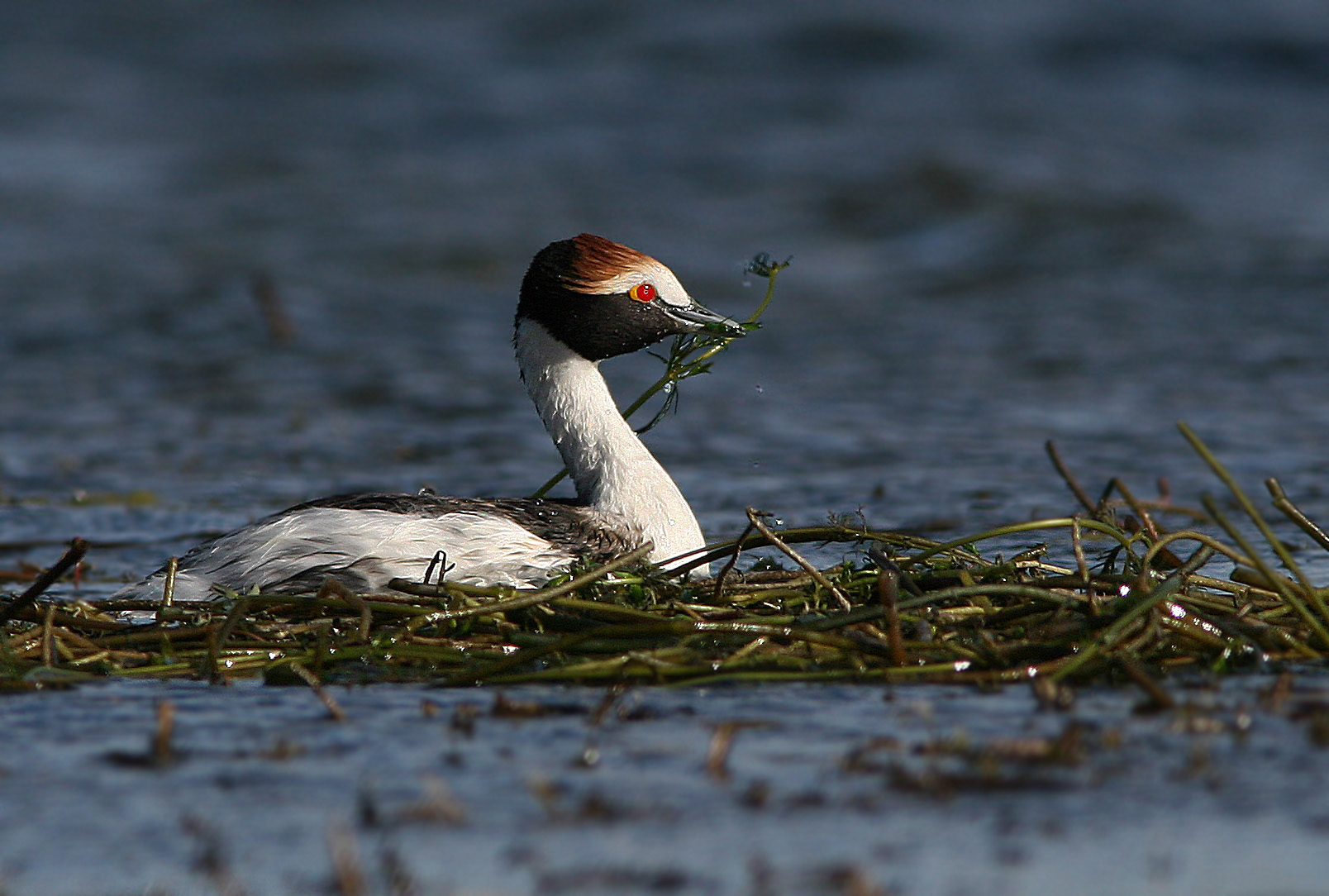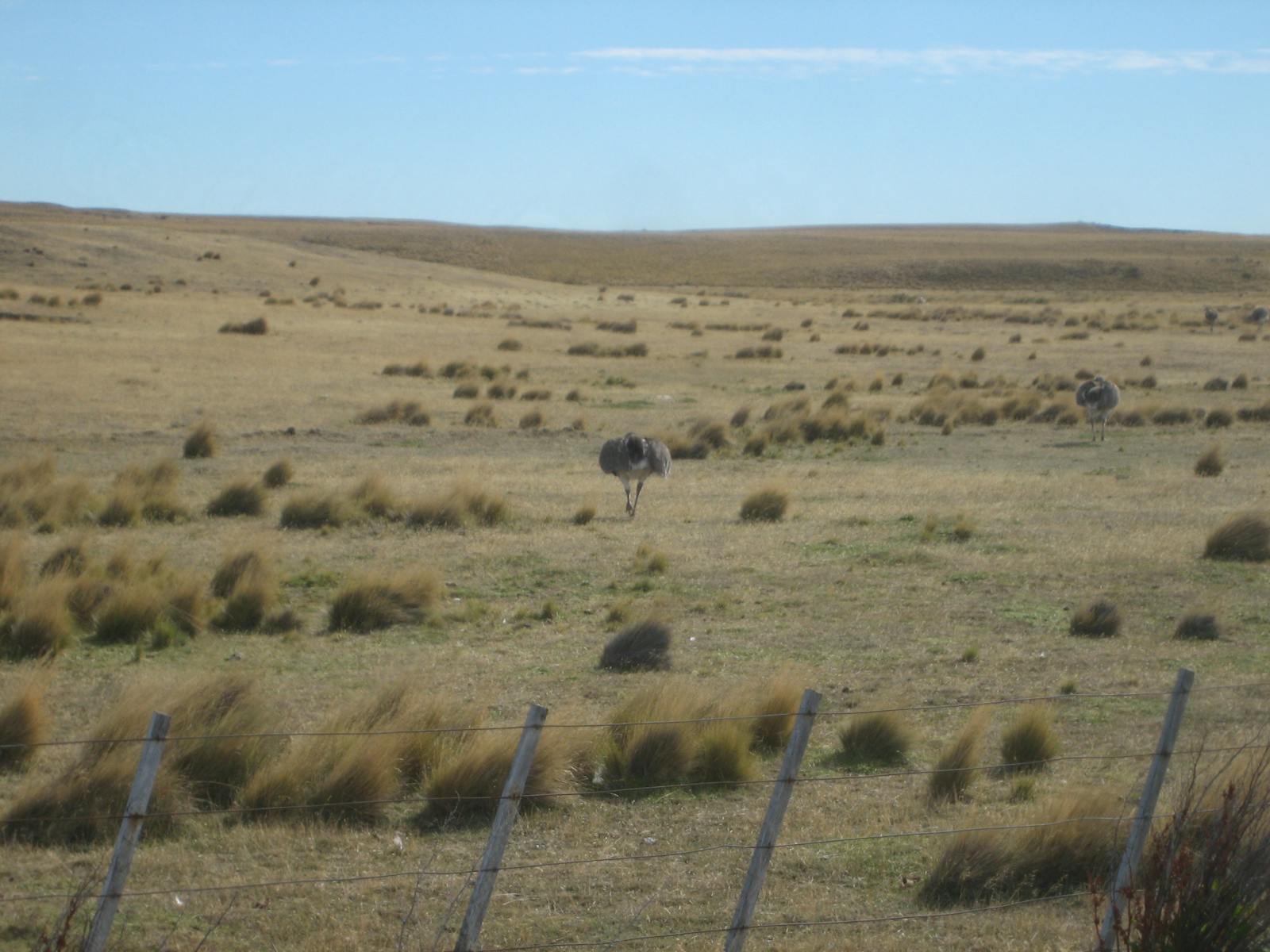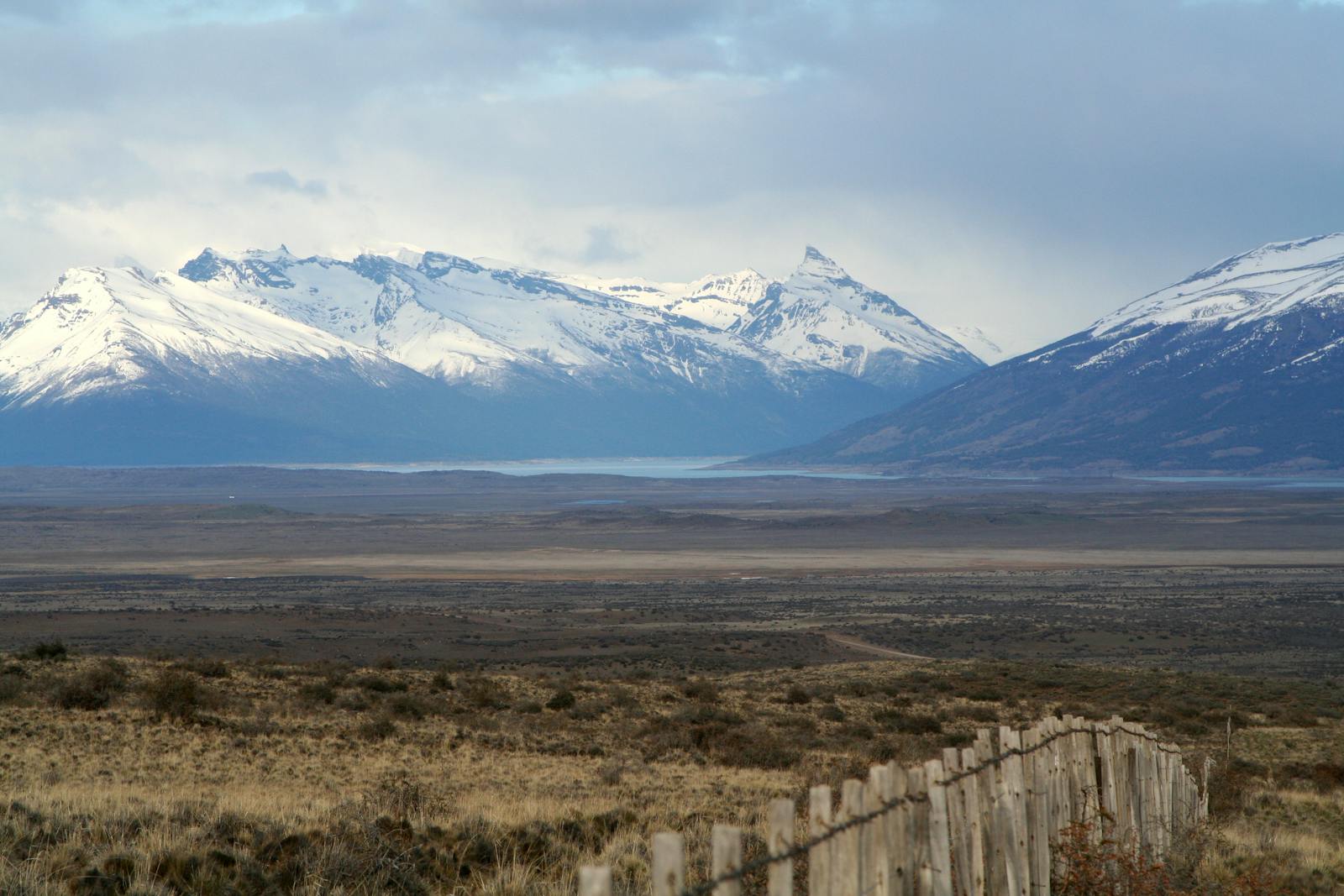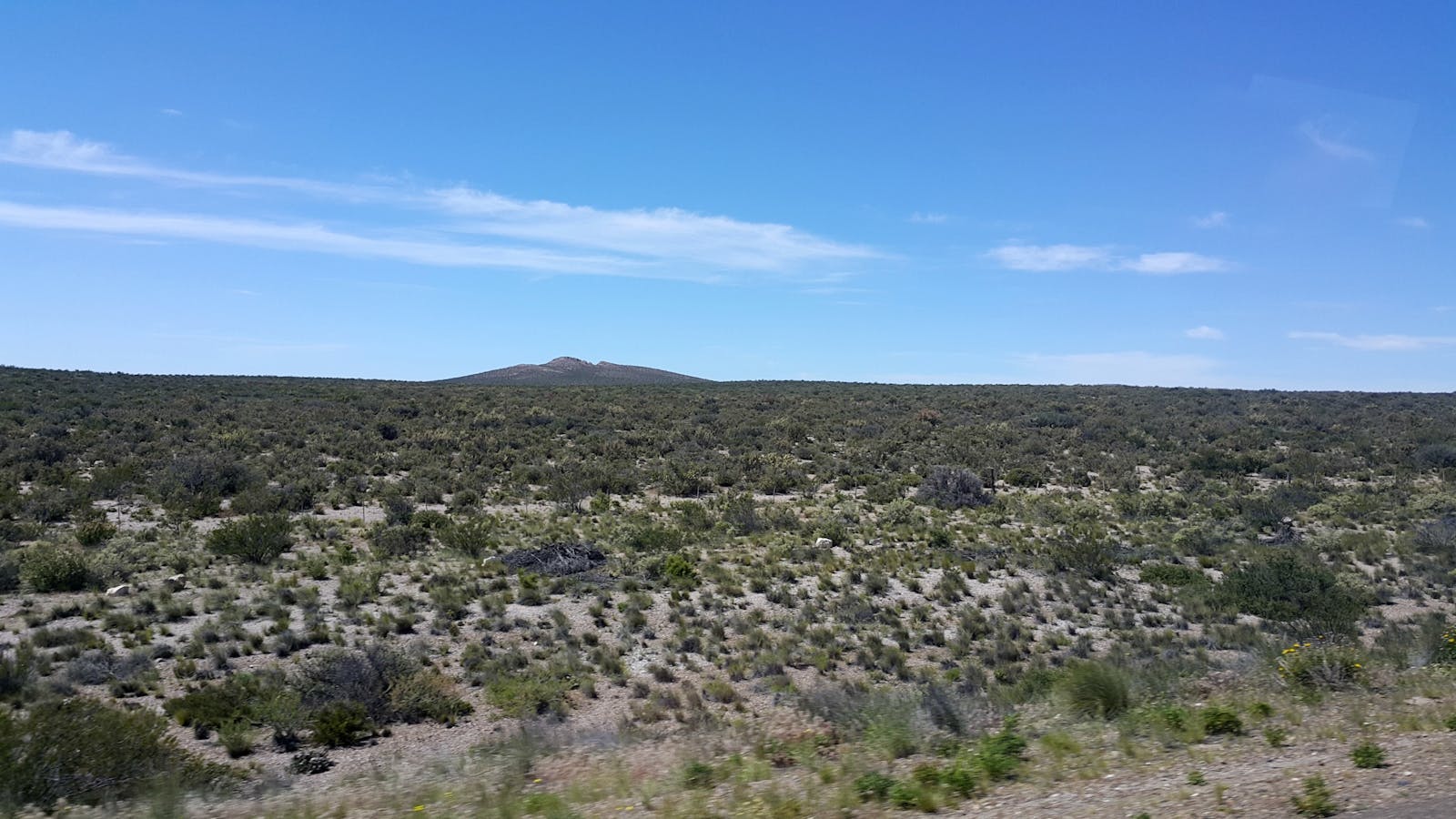Patagonian Steppe
The ecoregion’s land area is provided in units of 1,000 hectares. The conservation target is the Global Safety Net (GSN1) area for the given ecoregion. The protection level indicates the percentage of the GSN goal that is currently protected on a scale of 0-10. N/A means data is not available at this time.
Bioregion: Patagonia Steppe & Low Mountains (NT2)
Realm: Southern America
Ecoregion Size (1000 ha):
57,657
Ecoregion ID:
578
Conservation Target:
44%
Protection Level:
1
States: Argentina, Chile, Falkland Islands
The social tuco-tuco is a critically endangered rodent species that specialized in surviving in the open and famously windy Patagonian Steppe ecoregion. They are among the only tuco-tuco species to exhibit social behaviour in colonies, which includes sharing burrows, grooming, tendency for females to stay near “home” (birthplace) and sharing parental duty among unrelated individuals.
However, the tendency against intermingling with nearby family groups can have a negative effect on genetic diversity. Like prairie dogs in North America, these South American rodents can act as ecosystem engineers in turning over soil and maintaining open areas. Their only population is restricted in Nahuel Huapi National Park in western Argentina.

The flagship species of the Patagonian Steppe ecoregion is the hooded grebe. Image credit: Creative Commons
This Patagonian Steppe ecoregion mainly covers the Patagonia region of Argentina from the Atlantic Ocean shore and extends into southwestern Chile. The Peninsula Valdés is an outlier of this ecoregion, lying slightly north of the main body. The topography of this ecoregion includes low-lying mountains, plateaus, and plains. Soils are variable but generally rocky-sandy and poor in fine materials and organic matter. The climate is very dry and cold with snowfall during the winter and frosts nearly year-round; however, precipitation normally averages less than 200 mm/year.
In general, the vegetation of this steppe ecoregion is xerophytic and highly adapted for protection against drought, wind, and herbivory. Dwarf and cushion shrubs are the most widely occurring vegetation type in the ecoregion. Shrubs species of Acantholippia, Benthamiella, Nassauvia, and Verbena genera grow in these areas as well as cushion plants of Mulinum spinosum and Brachyclados caespitosus and tuft grasses, the most common being species of Poa and Stipa. Taller woody shrub species of Anarthrophyllum, Berberis, Schinus and Verbena can grow up to 3 m tall and often indicate a change in vegetation from the flat open steppes
This ecoregion has high levels of endemism in both plants and animals. Vegetation includes two endemic species of the genus Prosopis, one species of Larrea, and species of the genera Lycium and Schinus. As for animals, the National Council for Bird Preservation points to this region as one of the most important due to the presence of 10 endemic bird species.
Characteristic mammals include Patagonian mara, chinchilla, Patagonian weasel, Wolffsohn's viscacha, Humboldt’s hog-nosed skunk, puma, Argentine gray fox, guanaco, and Patagonian opossum. Notable reptiles include prickly gecko, Liolaemus fitzingeri, and Darwin’s iguana. Species of concern include the near threatened Patagonian mara, the endangered south Andean deer, the critically endangered hooded grebe, and the aforementioned social tuco-tuco.
Despite the low density of the human population, this ecoregion has been seriously affected due to the fragility of the environment. This ecoregion has many natural reserves. These include the Laguna Blanca National Park (Ramsar site), Nahuel Huapi National Park, Perito Moreno National Park, Los Glaciares National Park, Bosques Petrificados Natural Monument, El Payén Provincial Reserve, El Tromen Provincial Reserve, Domuyo Provincial Reserve, Somuncurá Provincial Reserve, Laguna Aleusco Provincial Reserve, Bosques Petrificados José Ormachea Provincial Reserve, Bahía San Julián Provincial Reserve and Península de Valdés Provincial.
The major threat to this ecoregion is desertification due to over-grazing primarily by sheep, damaging the limited plant coverage, and exposing the soil to erosion. In addition, many species of fauna are now threatened by poaching and trade due to the high prices they fetch, for example the skins of baby guanacos and rhea feathers. There is also pressure on foxes and pumas from hunting or poisoning because they are considered a potential threat to livestock.
The priority conservation actions for the next decade will be to: 1) promote sustainable grazing practices (sheep and cattle) that reduce impacts to remaining steppe habitat; 2) secure restoration projects in degraded areas; and 3) educate and foster a relationship with ranchers about alternative predator management measures.
Citations
1. Dellafiore, C. 2018. Southern South America: Southern Argentina and southeastern Chile https://www.worldwildlife.org/ecoregions/nt0805 Accessed October 4, 2018.
2. Davis, S.D., V.H. Heywood, O. Herrera-MacBryde, J. Villa-Lobos and A.C. Hamilton. 1997. Centres of Plant Diversity: A Guide and Straregy for their Conservation: Volume 3, The Americas. IUCN Publications Unit, Cambridge, U.K.
3. Chebez, J. C. 1988. El deterioro de la Fauna. In El deterioro del Ambiente en la Argentina (suelo, agua, vegetación, fauna). Fundación para la Educación, la Ciencia y la Cultura, Buenos Aires, Argentina.
4. Bidau, C.J. 2018. Ctenomys sociabilis. The IUCN Red List of Threatened Species 2018: e.T5826A22195323. http://dx.doi.org/10.2305/IUCN.UK.2018-1.RLTS.T5826A22195323.en. Accessed on October 4, 2018.






